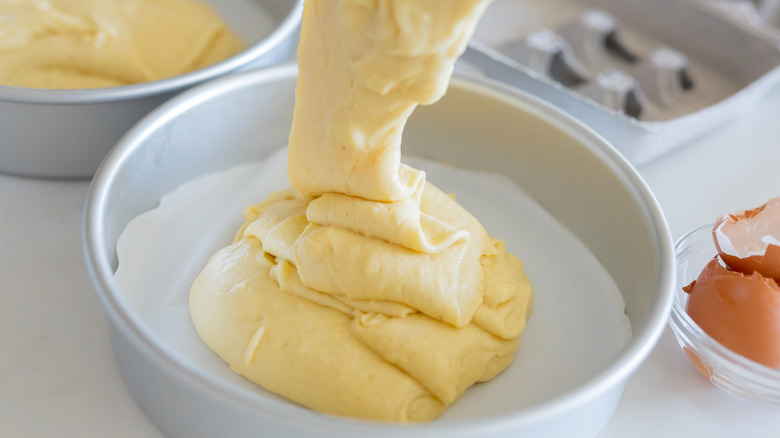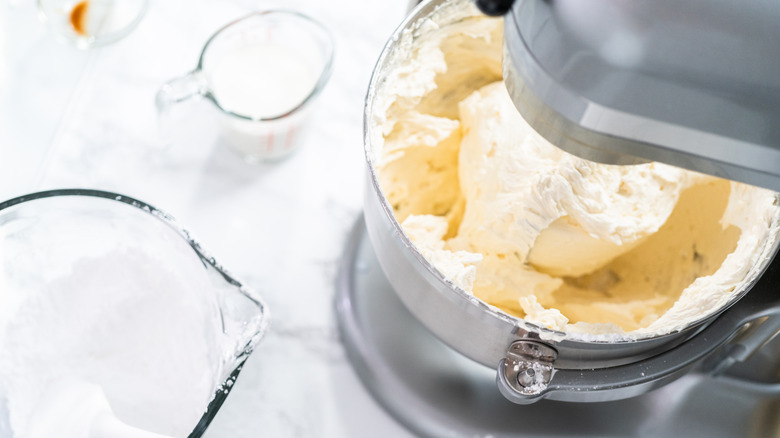This Simple Butter Mistake Might Be Why Your Cake Is So Dense
Ever make a cake that looks absolutely delicious on the outside, but once you slice into it, you find that your knife can barely cut through the crumb, it's so dense? If you're having a repeat issue with too-dense cakes, there might be a simple solution: You could be treating your butter the wrong way.
According to Sally's Baking Addiction, there are two ways you could be self-sabotaging when it comes to adding butter to your cake recipes. The first? Not using room temperature butter. Sure, it can be tempting to cut corners and throw a stick of butter straight from the fridge and into your stand mixer, or throw that stick of butter in the microwave to heat it up and then add it to your sugar and other ingredients, but that can seriously mess up your cake. This is because, as Bon Appétit breaks down, when butter is at room temperature, it's ideal for whipping, meaning it's ideal for holding air — air which then goes into your batter, making your cake light and fluffy. Butter that's too hot or too cold simply won't whip up the same way, resulting in a lackluster, too-dense cake texture.
So, the next time you make a cake, let that butter set out on your counter until it's warm enough to hold a finger imprint, but not so warm that it's starting to get all shiny and greasy.
The second mistake you're making with your butter? Whipping it too much.
But even if you use room temperature butter in your cake batter, you're still not in the clear. Sally's Baking Addiction says it's still all too possible to end up with a dense cake, even if you did let your butter come up to room temperature. If you allow your butter and sugar to whip up for too long, the extra, added air can be too much for the mixture, causing the entire thing to deflate. It's kind of like how you can blow too much air into a balloon, causing it to pop.
The best way to ensure a lighter, fluffier, definitely-not-dense cake is to let your butter come to room temperature first and then only whip your butter and sugar for one to two minutes. Any longer and you'll risk adding too much air into your mixture. If you're worried about possibly needing to mix your batter longer, once you add in other ingredients, such as milk or eggs, Sally's Baking Addiction says to bring those ingredients to room temperature before mixing as well, as that can help the whole batter come together quicker, for less overall mixing.

